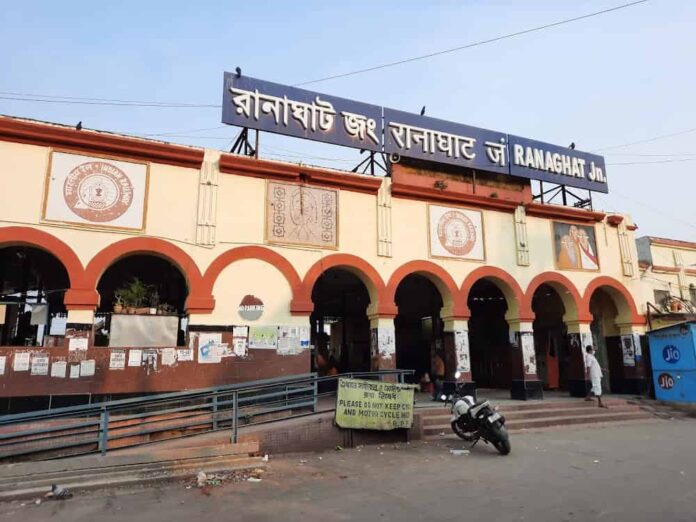Ranaghat – more than just a name, it’s a railway station, a bustling town, and a proud emblem of history, echoing with captivating folklore and the sweet scent of cultural heritage. This vibrant heart of Nadia district holds a fascinating tale behind its naming, a story that transcends mere etymology to become an imagining, a memory, and a vital cultural identity.
The Queen’s Hoofprints: Ranaghat of Legend
Old tales whisper of a powerful queen who, in days of yore, would venture out on her daily hunts in this very region. Her horse would regularly pause for rest by the tranquil banks of the Churni River, a secluded spot that eventually saw the creation of a ‘ghat’ – a landing or bathing place – exclusively for the queen’s use. Around this royal retreat, legends grew, and the place came to be known as “Rani’r Ghat” (the Queen’s Ghat). Over time, this grand name gracefully shortened to “Ranaghat.”
While this narrative may not be found in documented history, the elderly residents of Ranaghat still hold this story close to their hearts, as if it were an invisible crown adorning their beloved town.
The Railway’s Arrival: ‘Roonaghata’ in British Times
With the expansion of the East Indian Railway during the British Raj, Ranaghat emerged as a pivotal railway junction. Historical records from that era reveal the name “Roonaghata,” which, through local pronunciation, gradually evolved into “Ranaghat.”
The synergy between the river ghat and the burgeoning railway lines transformed Ranaghat into a crucial administrative and communication hub of its time.
‘Ranaghat’ in the Cultural Melody
Beyond history and folklore, the name ‘Ranaghat’ resonates deeply within Bengali culture and public consciousness. It’s the birthplace of figures like singer Arun Dutta and the viral sensation Ranu Mondal, whose voices have carried the town’s name across the nation.
From drama and music to literature, Ranaghat has touched the very emotions of Bengalis, leaving an indelible mark.
River, Name, and Nostalgia
Standing gracefully on the banks of the Churni River, Ranaghat is more than just a town. It embodies a bygone river ghat, a royal pathway, a significant railway station, and the very face of contemporary progress. Every letter of its name is intertwined with the shadows of history, the fragrance of culture, and the heartfelt conversations of its people.
Conclusion: A Town Lost in Its Name
‘Ranaghat’ – a name that evokes the lingering presence of a queen, the nostalgic whistle of a train, and the gentle murmur of the river. This name is a story etched onto the pages of time, carrying the whispers of our roots from one generation to the next.
Therefore, this name is not merely a place-name; it’s a symbol of identity – a town woven from the threads of history, belief, and profound sentiment.








[…] Read More: Ranaghat: Where Royalty, Rails, and Rivers Converge […]